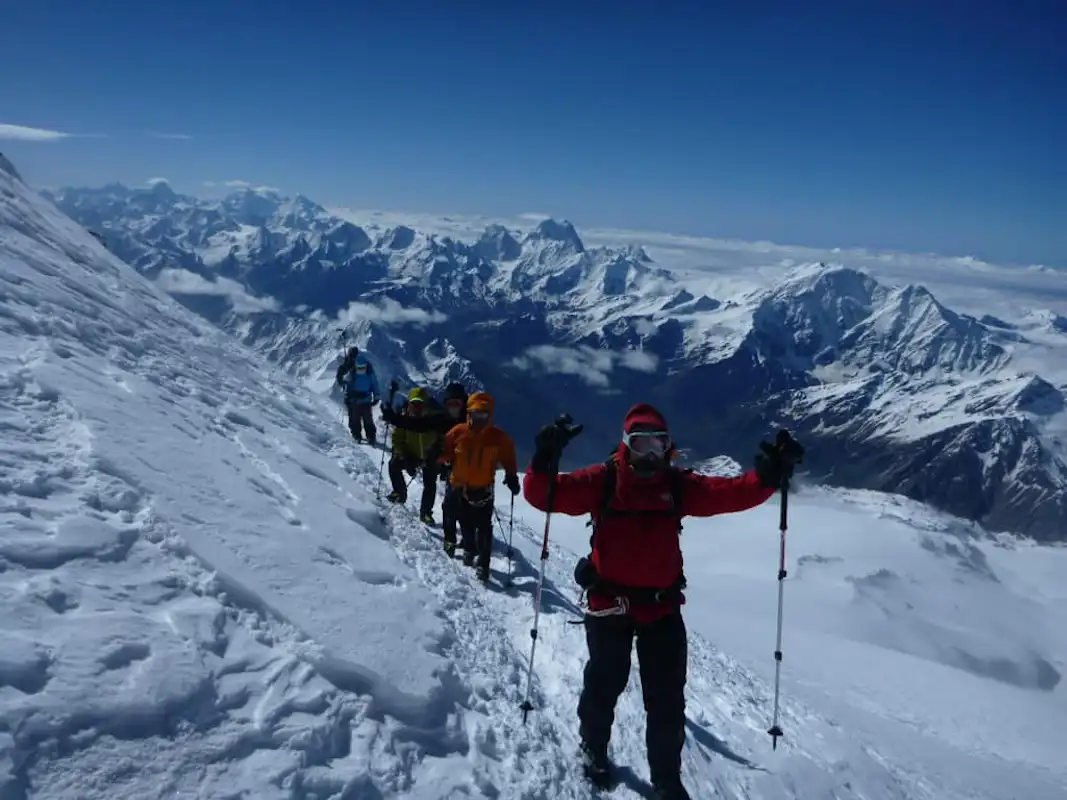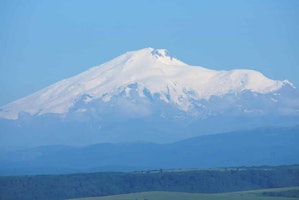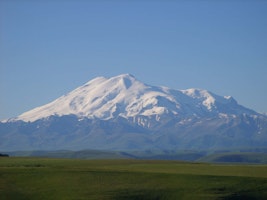A rich history and legendary culture are just the beginning to the illustrious story of Mt. Elbrus. The 5,642-meter-tall mountain - the highest in Europe and thus one of the Seven Summits – is in the Caucasus Mountains of Russia near the border with Georgia. It is a dormant volcano and the tenth most prominent mountain on Earth. Such an impressive resume needs no references, but anyone who has taken on Elbrus can tell you why it is such an exhilarating and unforgettable endeavor.
Russia is well-known for its vast wilderness and its countless adventure activities, and Mt. Elbrus is no different. The climb is demanding but pays off with an evocative and abundant amalgamation of valleys, lakes, and ridges along the way. It has two summits: the west summit, at its prominent height of 5,642 meters, and the east summit of 5,621 meters. The first ascent of the east summit was in 1829 by Khillar Khachirov, but it wasn’t until 1874 that a successful attempt of the west summit was completed – F. Crauford Grove achieved this feat with his British expedition.
This monumental landmark is part of the Prielbrusye National Park, one of Russia's protected areas. Its height requires acclimatization for a safe and successful trip to the top. Altitude sickness is a common occurrence for ill-prepared climbers. To proper acclimatize to the mountain, the recommended period is one week at altitudes within the 2,500m to 4,500m range before pushing to the summit. Mountaineers can expect possible Grade III rock and ice climbing.
In Greek mythology, it was Elbrus –then under the name of Strobilus– that Zeus chained Prometheus to for stealing fire from the Gods. To the Balkars of the Caucasus, the mountain is also called “Mingi-Tau,” which translates to “resembling many mountains,” referencing the mountain’s size and stature.
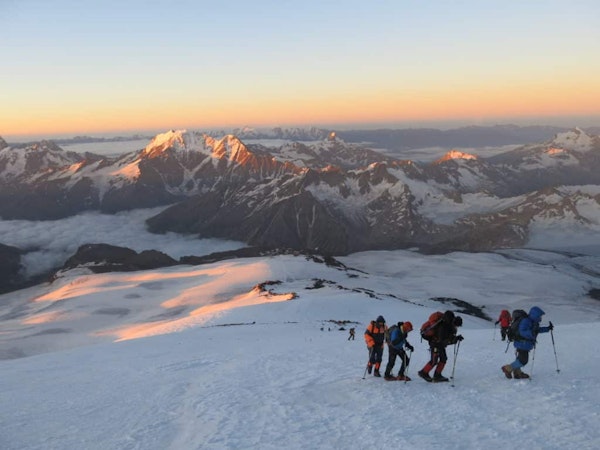
Mt. Elbrus has more than 20 glaciers that feed the major rivers of the neighboring valleys, presenting exciting challenges and amazing natural features for mountaineers to enjoy. There are different areas that require mixed climbing and significant hazards, so climbers of all strengths can decide the demands of their climb. Whether on a straightforward ascent to the top or a meandering exploration of the terrain and views, climbing Mt. Elbrus is one a world-class adventure and an unforgettable experience.
Climbing Routes
The Standard Route is the most accommodating path to the summit. It makes its way up the South Face, beginning at the Barrels Huts (also known as Garabashi Station) at 3,900 meters. From here, mountaineers will head for the Diesel Hut at 4,157 meters. Staying on the path will keep you at a safe distance from the crevasses on either side of the trail as you continue up the South Face. As you reach the Pashtuhova Rocks (4,670m) mare the beginning of a steep increase in elevation.
The remains of an old hut still sit in the col between the east and west summits. From there, make your way west to the rocky shoulder and the ensuing summit ridge. Use caution when descending as well, as it poses similar dangers as the ascent.
The Southwest Face Route, which begins in Voroshilov at 2,150 meters, is a more challenging route that consists of glacier traverses and steep inclines. This part of the mountain is known to feature advanced-level hazards, such as icefalls.
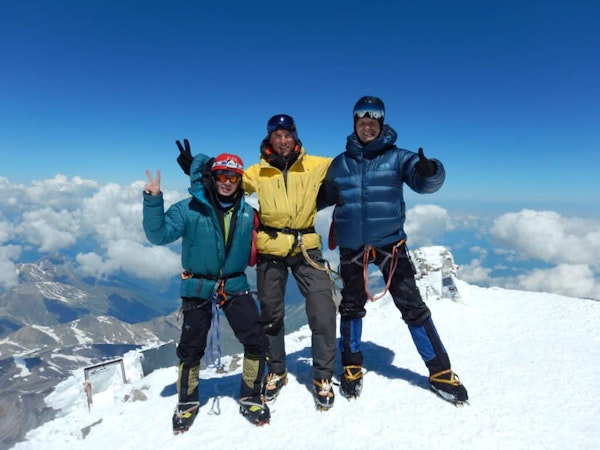
There is also the Akcheryakol Lave Flow Route from the east. It starts in the town of Elbrus, following the associated glacial shield through the gorge. It commences at Irikchat Pass at roughly 4,000 meters. This route also necessitates proper acclimatization and should be undertaken only after careful and considerate planning.
Starting Point(s) / Distance
Most of the ascents to the summit of Elbrus begin at the Barrels Huts, or Garabashi Station. This route can last for an entire day or more, covering 1,743 meters. There is a cable car system that runs from Azau Valley (2,350m) to Barrels Huts, though ambitious climbers can choose to walk for an additional challenge.
Duration of the Ascent
When preparing to take on Mt. Elbrus, mountaineers should plan for a week or more at altitude because of the need for acclimatization. There are plenty of other mountains in the Caucuses, like Little Kogutay (3,850m), that will allow you the proper transition into altitude.
The ascent truly begins from the Barrels Huts at 3,900 meters, moving along the Standard Route and covering a substantial amount of ground to the summit. Over the course of a climb, mountaineers will climb for six to nine hours, depending on weather and ability of the group. The descent takes an additional three to six hours.
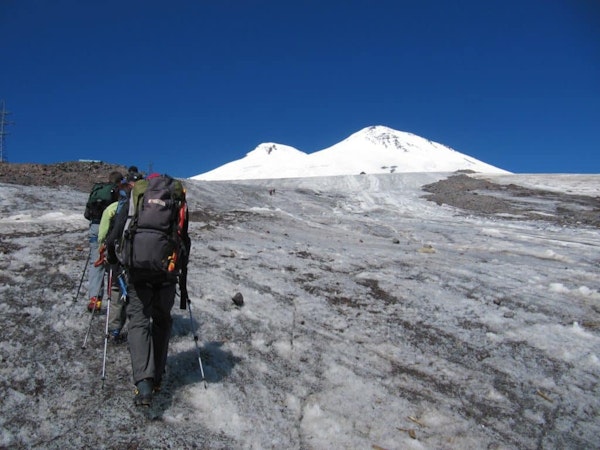
Mountain Huts
The most notable huts on the climb up Elbrus are the aptly-named Barrels Huts, or Garabashi Station. Located at 3,900 meters and considered the starting point for a summit attempt, they are literally barrel-shaped, with accommodation space for 48 guests, possibly more. Some of the huts have heaters, but the intense cold can affect their functionality.
The Diesel Hut (4,157m) is set further up on the mountain, though it sleeps only 20 guests. Running water can be found nearby. While heaters are also featured in the Diesel Hut, the cold temperatures still manage to dominate the environment.
Camping is allowed on the mountain, though mountaineers planning on camping should be prepared to take their campsite with them and not further pollute the mountain. There is an environmental struggle currently underway on Elbrus, so climbers should not contribute to the problem.
Physical Requirements / Technical Difficulties
The climb, though not predominantly technical, is still a difficult one. Many climbers face adversity on their way to the top, even the most experienced mountaineers. Participants should be in good physical condition to complete the ascent, with the necessary experience to successfully overcome the associated obstacles.
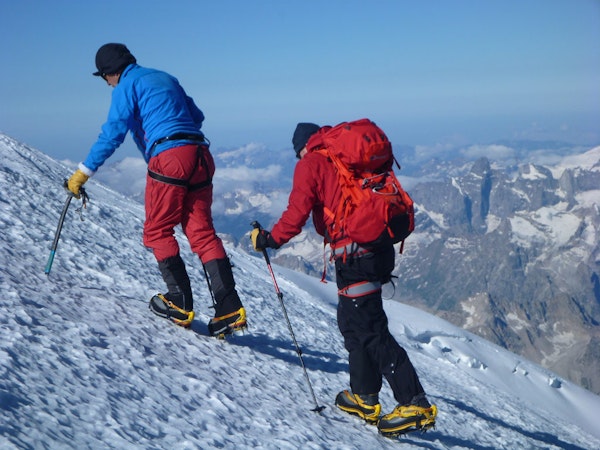
The temperature and the weather provide some of the greatest challenges, which have been known to disorient climbers and mask their path. Icefalls can be treacherous, so it behooves mountain climbers to properly prepare for the cold and violent weather. Altitude sickness and improper acclimatization are responsible for additional peril.
There may also be some red tape associated with climbing in Russia. Check your regional requirements for entering the country, as you may need the following items to reach Mt. Elbrus:
Russian visa and immigration card
Voucher mentioned Mt. Elbrus / the Caucasus
OVIR registration
Permission document to enter the Elbrus Area Preserve
Climate Conditions
Elbrus has notoriously severe weather, an additional obstacle to achieve a successful summit. A mountaineering excursion is possible year-round, though the best season to climb is during the summer, generally from May to September. It provides the most accommodating weather to embark on a journey to the peak, though it does not completely mitigate the hazards.
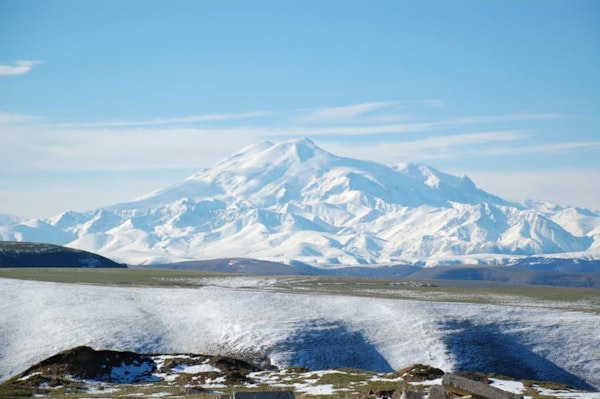
Attempted summits outside of the peak season are infrequent and reserved for the most experienced mountaineers. Any winter enthusiasts who find themselves on an ascent can expect extremely cold weather, for better or worse. July and August are the busiest months for a summit attempt, which means crowded trails and an uptick in associated environmental issues. It is common to see many climbers heading towards the top of Mt. Elbrus during the busy season.
Equipment
Like any high-mountain climbing trip, a complete arsenal of mountaineering equipment is required no matter the season. While it is not a particularly technical climb, Mt. Elbrus is a challenging objective that should be taken seriously. Mountaineers must prepare for all possible obstacles, thus a helmet, harness, ropes, and other items should be added to the gear. The necessary items include but are not limited to:
Helmet
Crampons
Ice axe
Harness
Carabiners
Belays
Ropes
Trekking poles
Mountaineering boots
Hiking boots
Sleeping bag
Base layer top and bottom
Personal clothes (weather appropriate)
Personal toiletries
Sun protection
If you will be camping on the mountain during the ascent, you will need to bring the appropriate camping gear as well, including tents, cooking equipment, utensils, and proper waste collection items.
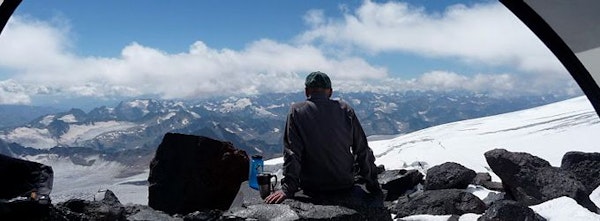
Estimated Price
Mountaineering programs on Elbrus don’t have to break the bank. If you travel in a larger group, it is possible to join a trip as low as €625. Some programs can reach €2,290 or more, featuring inclusions like personal insurance, all meals, and all accommodations during the trip.
The price of a program varies based on what is included, the duration of the trip, and the number of participants. Expecting to pay between €1,200 and €1,500 is a safe assumption. Consider the most important aspects of your desired trip and decide on the right program for you. This guarantees you will make the most of your mountain climbing experience.
Other Activities
There are innumerable activities to keep a wandering mountaineer occupied around Elbrus. As soon as spring hits, it is common to find skiers and snowboarders making their way to the mountain, with amazing ski mountaineering programs available for everyone. For a week or more you can scour the mountainside for the best pockets of fresh powder and carve out an unforgettable ski vacation in the Caucasus.
Russia itself is a gem just waiting to be discovered – there are a plethora of fulfilling programs to captivate your senses and provide the trip of a lifetime. From an afternoon of nature discovery and trekking to a adrenaline-pumping month-long ski touring expedition, you can choose what type of experience you want to have in the unique terrain of the Russian expanse.
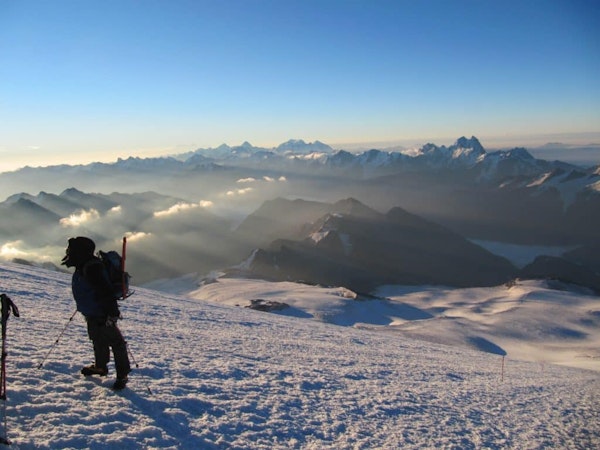
Head for the top of an iconic European mountain, cross off one of the Seven Summits of your bucket list, and embark on a mountaineering journey to see Russia from the life-changing heights of Mt. Elbrus!
